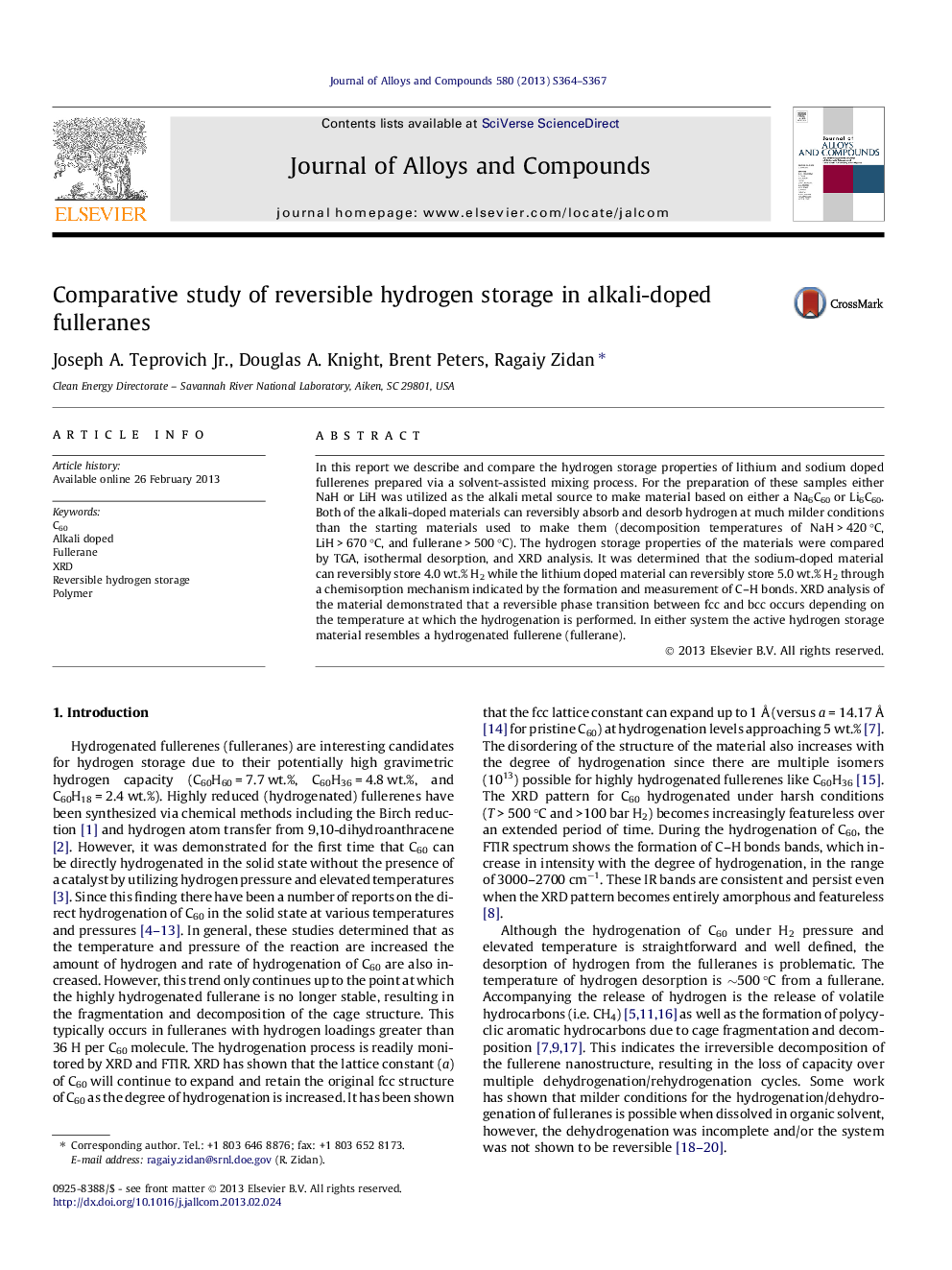| Article ID | Journal | Published Year | Pages | File Type |
|---|---|---|---|---|
| 1613438 | Journal of Alloys and Compounds | 2013 | 4 Pages |
In this report we describe and compare the hydrogen storage properties of lithium and sodium doped fullerenes prepared via a solvent-assisted mixing process. For the preparation of these samples either NaH or LiH was utilized as the alkali metal source to make material based on either a Na6C60 or Li6C60. Both of the alkali-doped materials can reversibly absorb and desorb hydrogen at much milder conditions than the starting materials used to make them (decomposition temperatures of NaH > 420 °C, LiH > 670 °C, and fullerane > 500 °C). The hydrogen storage properties of the materials were compared by TGA, isothermal desorption, and XRD analysis. It was determined that the sodium-doped material can reversibly store 4.0 wt.% H2 while the lithium doped material can reversibly store 5.0 wt.% H2 through a chemisorption mechanism indicated by the formation and measurement of C–H bonds. XRD analysis of the material demonstrated that a reversible phase transition between fcc and bcc occurs depending on the temperature at which the hydrogenation is performed. In either system the active hydrogen storage material resembles a hydrogenated fullerene (fullerane).
► Catalytic effect of alkali metals of fullerane formation. ► Hydrogen storage properties of alkali metal hydrides and fullerene composites. ► Novel intercalation of Na and Li in the fullerene lattice. ► Reversible phase transformation of C60 from fcc to bcc upon de/rehydrogenation. ► Potential to enable to the formation of other carbon based hydrogen storage systems.
